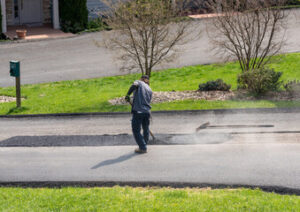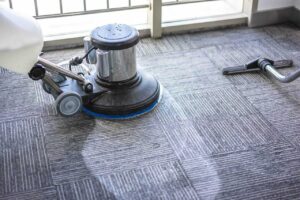While roofs are highly durable and meant to withstand a lot of wear and tear, the weather can cause damage that needs attention. Missing shingles, damp walls, or musty smells are all signs of a problem.

Surface repairs like patching holes or replacing a small number of damaged shingles are relatively inexpensive. However, more complex issues like repairing long valleys or replacing the metal pipe collars that help vent furnaces, dryers, and other household appliances can be costly. To learn more, visit https://www.northportflroofing.com.
The cost of roof repair is a big consideration for homeowners. Minor repairs can become expensive if not addressed quickly. A leaky seal can lead to rot or even an entire section of the roof that needs replacing. It is a good idea to get regular roof inspections from professional roofing companies. This can help you spot problems early, and save you money in the long run. The type of roof you have also affects repair costs. Asphalt shingles are fairly simple to repair, while premium or luxury roofing materials like slate or metal require specialized skills and expensive tools.
The extent of the damage can also affect the cost of a repair. A small hole in the roof can be repaired for as little as $100, but a bigger hole could require more extensive repairs or even a replacement.
If you’re unsure whether the repairs are covered by your homeowners insurance, it’s a good idea to consult with an insurance specialist. They can give you an estimate of the repair cost and help you decide whether to proceed with a claim. If your house is located in an area prone to severe weather, it’s also worth checking with local governments for any rebates available for energy-efficient upgrades.
A well-maintained roof is essential for keeping everything else in the house safe and dry. It is also a key part of the home’s curb appeal. If you notice any damage, it’s important to call a professional roofer right away so they can assess and repair the problem.
There are a few ways you can keep your roof repair costs down. For example, you can perform a ground-level inspection after storms to identify any issues. You can also shop around for the best prices and choose a reputable roofer with great reviews. If possible, try to schedule repairs during the offseason when labor costs are lower. You should also check with your homeowners insurance company to see if they cover repairs for storm or natural disaster damage. Finally, you can use an app to monitor and track your roof’s condition and maintenance requirements.
Accessibility
The accessibility of the damaged area and required materials impacts roof repair costs. For example, the location and severity of the leak affects labor costs, and high-quality materials or specialized brands can increase prices. In addition, if the roof is very steep or complicated to access, it can increase labor and safety requirements.
If the pipe boot needs to be removed, it can require a significant amount of labor and time to ensure that the new flashing is properly installed, ensuring that water channels away from the roof-wall junction. This also includes assessing the condition of the rain cap and storm collar.
For healthcare facilities, the accessibility of the roof and surrounding areas can impact the repair process. Contractors will need to be able to work around patients, staff, and equipment. This is especially true in hospitals, which will need to maintain full functionality throughout the project and must limit disruptions. For this reason, many healthcare facilities will contract with roofing companies that specialize in working with the complexities and safety concerns of medical buildings.
Materials
The materials needed for a roof repair job will vary depending on the type of existing roof, climate conditions and the damage. It is important to choose the right materials for the job to protect your home from water damage and ensure that the repair work lasts for years to come. Working with a qualified contractor can help you select the right materials for your specific roof.
Among the most essential roof repair materials are cement and sealant. These products provide a waterproof seal and can protect against future moisture damage. They can also strengthen weak spots in the roof decking or tiles. It is important to use a high-quality product that is designed for your roof type and the local weather conditions.
Other essential roofing repair materials include tape and fabric. Tape is a water-resistant sealant that can be used to patch small holes in the roof, while fabric can help to reinforce weak spots on shingles or tiles. Both of these products are available in a variety of colors to match your roof color and design.
A hammer and nail gun are also essential tools for any roof repair job. The hammer should be heavy enough to withstand the weight of the shingles or tiles, while the nail gun should have adjustable settings so that you can set the nails at the proper depth. A pair of scissors is also helpful for cutting shingles and tiles to the correct size.
During the roof repair process, it is possible that you will need to cut holes in your roof for vents and chimneys. These holes must be sealed to prevent air or moisture from leaking into the house. In this case, it is important to have pipe boots on hand to seal the hole. Pipe boots are rubber pieces that fit securely around the holes in the roof created for ventilation pipes. In addition, a circular saw is a handy tool for removing and replacing damaged wood in the roof deck. The saw should be sharp and have a good quality blade, so that it can cut through the rotted wood easily and quickly.
Safety
It is important to be mindful of safety measures when performing roof repair. The roof is a hazardous area, and workers need to be prepared to deal with the physical demands of the job. This includes wearing proper protective gear such as hard hats and eye protection. It is also essential to properly use and maintain tools such as ladders, scaffolding, and man lifts.
A thorough inspection of the roof is necessary to determine its structural integrity and any potential hazards. For example, a roof with dry rot may need to be replaced. Additionally, old nails left exposed on the surface of the roof can cause serious injury. Therefore, it is critical to ensure that all nails are either covered with a new shingle or caulked in place.
Workers should always use a safe ladder when accessing the roof. In addition, they should clear any obstacles in the way of the work area and be aware that materials can fall off the roof during the repair process. This can include furniture, plants, and other items that are not secured on the ground. In some cases, workers should use a harness to increase their stability and reduce the risk of falls from the roof.
It is also important for workers to assess the weather conditions before starting any roof repair. Working on a roof is not recommended in strong winds, heavy rains, or freezing temperatures. In these conditions, it is easier for the wind to dislodge shingles or damage other components of the roof. It is also more difficult to walk on a slippery surface and may be dangerous for workers.
During the roof repair process, workers should be careful to remove any debris or trash that could get in their way. Also, they should not leave any air hoses or power cords on the roof, as they can easily trip workers or lead to electrical accidents. Additionally, any shingles or tiles that are removed should be placed in a safe location.
Workers should also be sure to stay hydrated during the job. Roofwork is a demanding physical activity, and it is essential for them to drink water regularly to avoid dehydration and heat exhaustion. This will also keep them alert and improve their ability to perform the job. In addition, workers should always wear a hard hat and use a harness when working on the roof.






